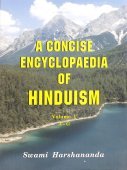Vaisheshikadarshana, Vaiśeṣikadarśana, Vaisheshika-darshana: 2 definitions
Introduction:
Vaisheshikadarshana means something in Hinduism, Sanskrit. If you want to know the exact meaning, history, etymology or English translation of this term then check out the descriptions on this page. Add your comment or reference to a book if you want to contribute to this summary article.
The Sanskrit term Vaiśeṣikadarśana can be transliterated into English as Vaisesikadarsana or Vaisheshikadarshana, using the IAST transliteration scheme (?).
Languages of India and abroad
Sanskrit dictionary
Source: Cologne Digital Sanskrit Dictionaries: Monier-Williams Sanskrit-English DictionaryVaiśeṣikadarśana (वैशेषिकदर्शन):—[=vaiśeṣika-darśana] [from vaiśeṣika] n. Name of [work]
Sanskrit, also spelled संस्कृतम् (saṃskṛtam), is an ancient language of India commonly seen as the grandmother of the Indo-European language family (even English!). Closely allied with Prakrit and Pali, Sanskrit is more exhaustive in both grammar and terms and has the most extensive collection of literature in the world, greatly surpassing its sister-languages Greek and Latin.
Kannada-English dictionary
Source: Alar: Kannada-English corpusVaiśēṣikadarśana (ವೈಶೇಷಿಕದರ್ಶನ):—[noun] = ವೈಶೇಷಿಕ [vaisheshika]2 - 2.
Kannada is a Dravidian language (as opposed to the Indo-European language family) mainly spoken in the southwestern region of India.
See also (Relevant definitions)
Partial matches: Darshana, Vaisheshika.
Full-text (+23): Vaisheshika, Agunavant, Ayonija, Anapadesha, Asamahita, Arupi, Rupasparshavant, Avasphurjathu, Ayugapad, Apekshitatva, Anitaretarakarana, Ruparasagandhasparshavant, Ruparasasparshavant, Ayathadrishta, Apratyaksha, Adrishtakarita, Avakshepana, Abhuta, Aprasiddha, Ayata.
Relevant text
Search found 11 books and stories containing Vaisheshikadarshana, Vaiśeṣikadarśana, Vaisheshika-darshana, Vaiśeṣika-darśana, Vaisesikadarsana, Vaisesika-darsana, Vaiśēṣikadarśana; (plurals include: Vaisheshikadarshanas, Vaiśeṣikadarśanas, darshanas, darśanas, Vaisesikadarsanas, darsanas, Vaiśēṣikadarśanas). You can also click to the full overview containing English textual excerpts. Below are direct links for the most relevant articles:
Jainism and Patanjali Yoga (Comparative Study) (by Deepak bagadia)
Part 8.2 - Introduction to Vaisesika Darsana < [Chapter 1 - Introduction]
Nyaya-Vaisheshika categories (Study) (by Diptimani Goswami)
Qualities (13): Dravatva (Fluidity) < [Chapter 4 - Quality and Action]
Abhāva as a Separate Category < [Chapter 7 - Abhāva (Non-existence)]
Different Types of Quality (Introduction) < [Chapter 4 - Quality and Action]
The validity of Anumana (inference) in Nyaya system (by Babu C. D)
Prasthanatrayi Swaminarayan Bhashyam (Study) (by Sadhu Gyanananddas)
2.4. Vaiśeṣika Darśana < [Chapter 1 - Introduction]
2. Darśana (Introduction) < [Chapter 1 - Introduction]
Yoga-sutras (Ancient and Modern Interpretations) (by Makarand Gopal Newalkar)
Part 3b - Āstika Darśana (2): Vaiśeṣika School < [Introduction]
Part 3e - Āstika Darśana (5): Mīmāṃsā Darśana < [Introduction]
The Concept of Sharira as Prameya (by Elizabeth T. Jones)
The Vaiśeṣika Philosophy < [Chapter 1]
Definition of Padārthas (Prameyas) < [Chapter 2]
Uttara Mīmāṃsa Philosophy < [Chapter 1]
Related products
